Refund Guaranteed
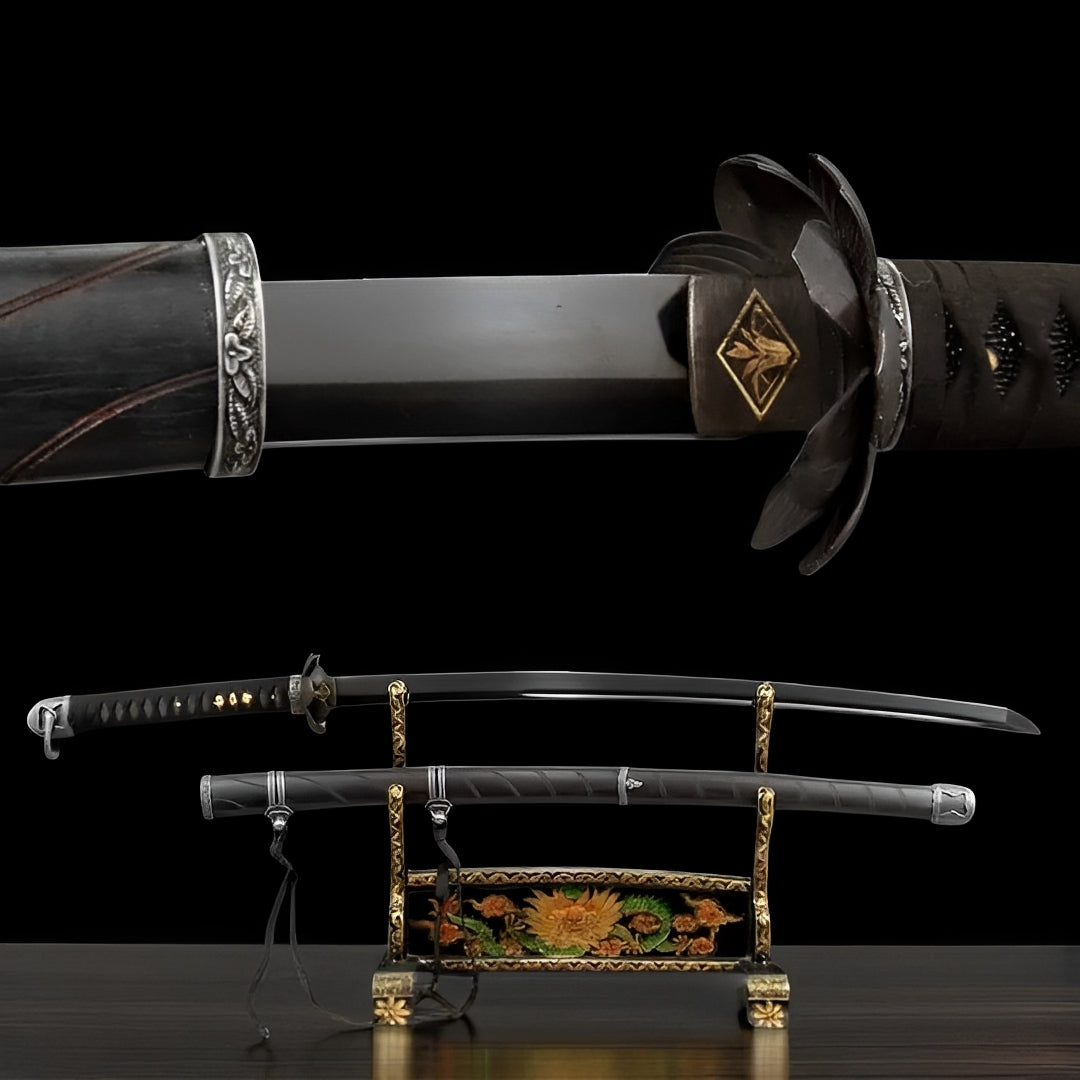
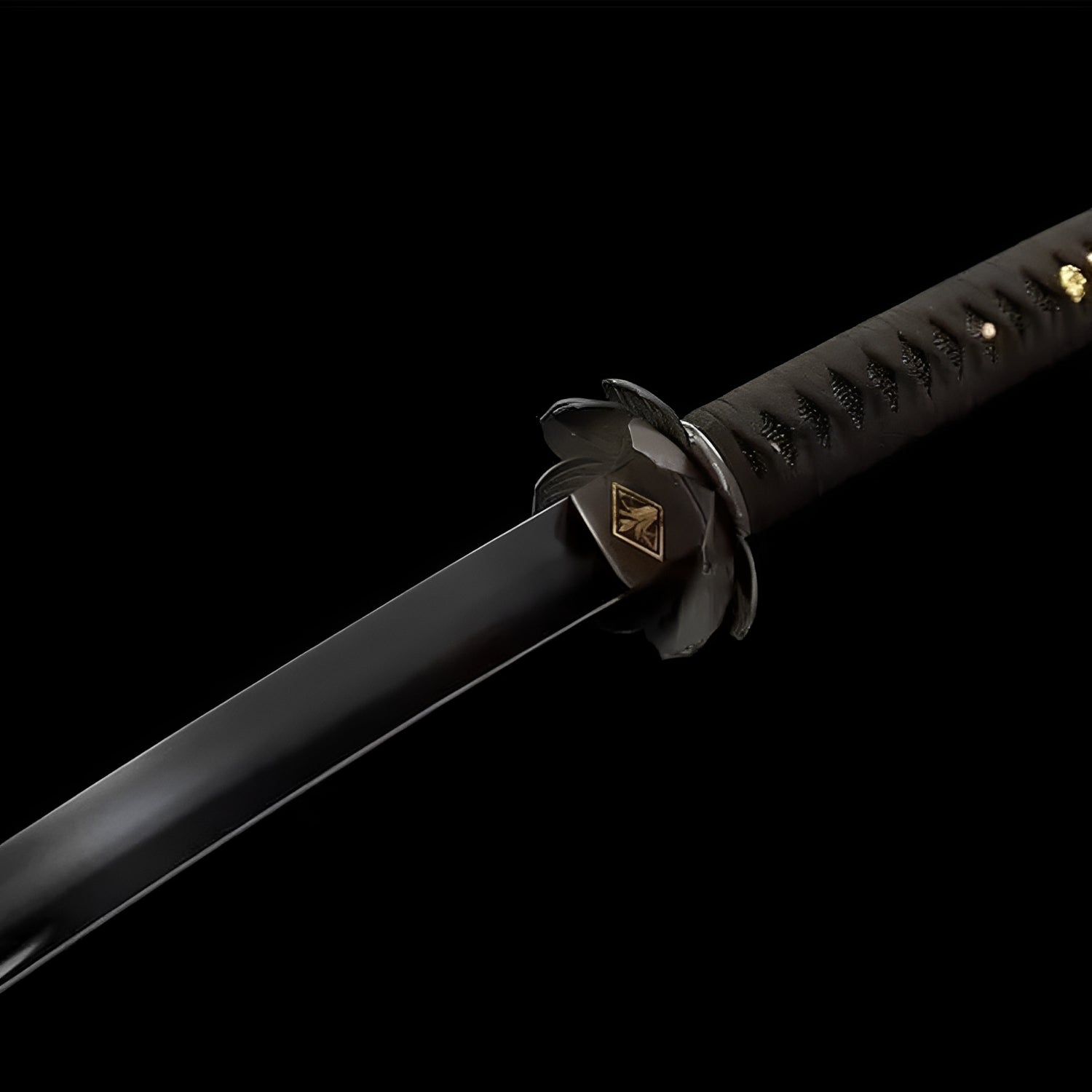
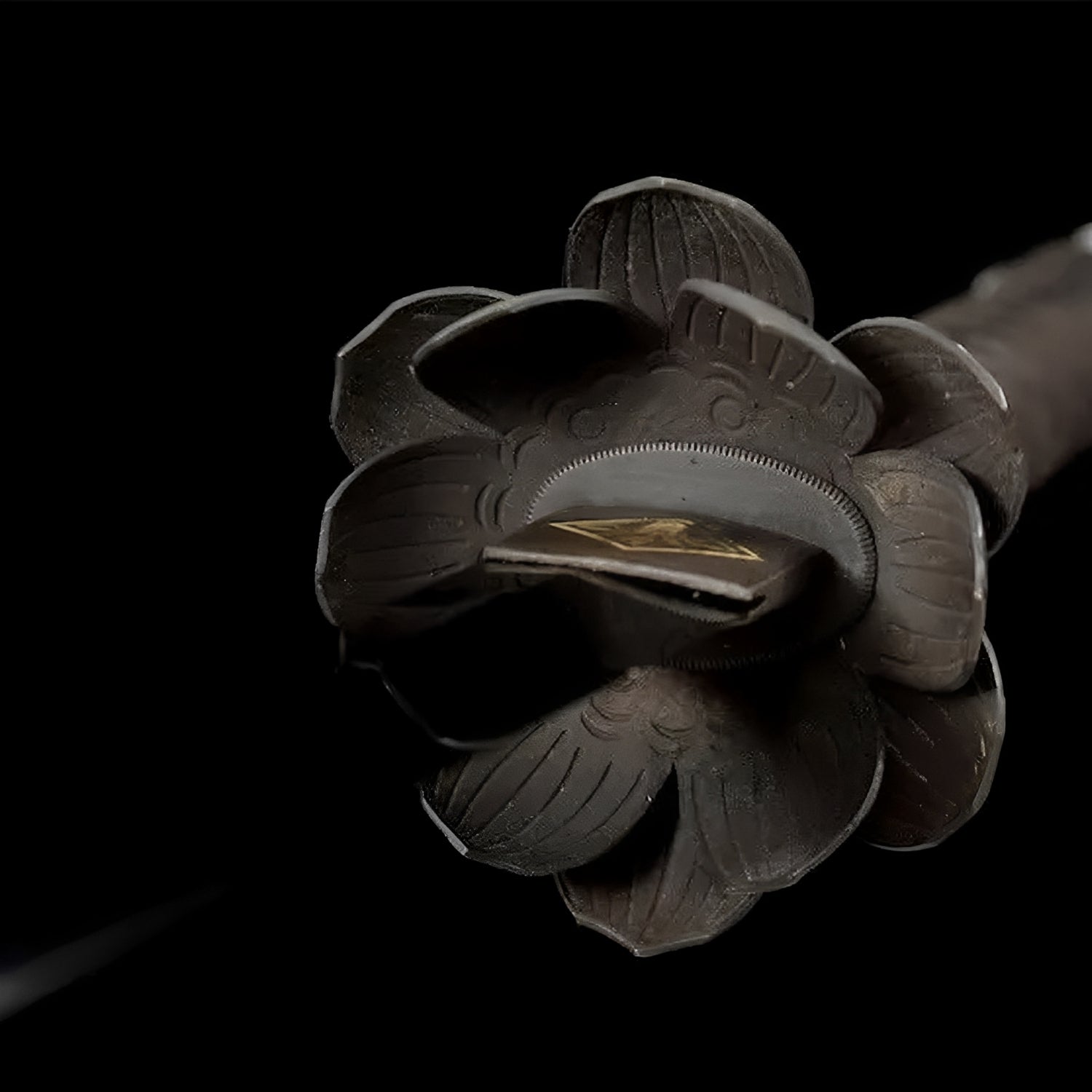


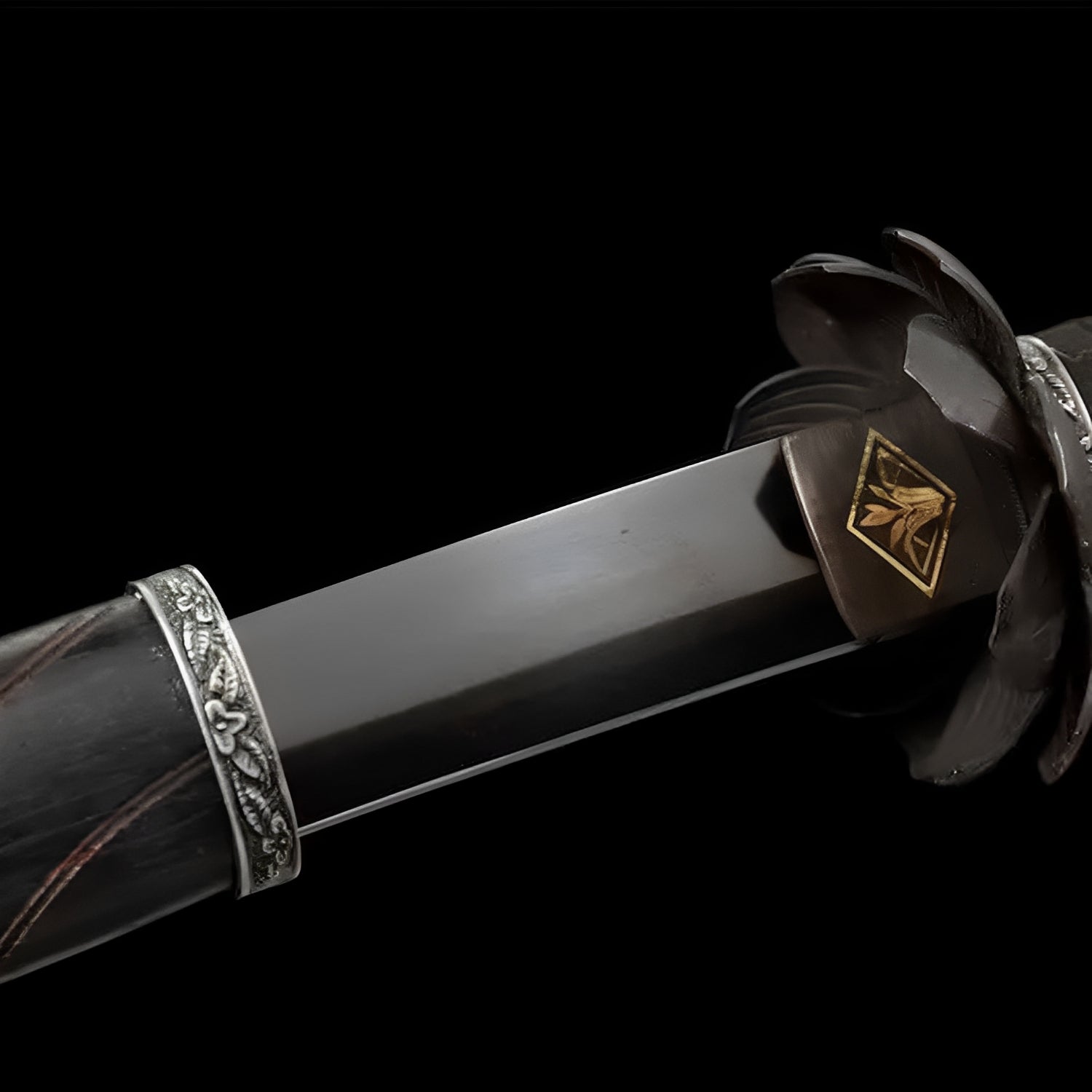


Why choose us
Ships within 48/72h
Forged Blade
Collector Quality
Trusted Globally
Inspired by Japan
Sekiro Death Blade Katana - 黒髪刀
Included with your order



Note: Engraving placement and orientation may vary by blade model (hamon, geometry, and flat area).
Free Shipping over $250
No Bots, No AI
Refund Guaranteed
Free Shipping over $250
No Bots, No AI
Our team is here to help with any questions or concerns.
We’re always happy to assist you — don’t hesitate to reach out.
Why choose us
Ships within 48/72h
Forged Blade
Collector Quality
Trusted Globally
Inspired by Japan

Sekiro Death Blade Katana - 黒髪刀
Specifications
- Full tang in the handle
- SHARP BLADE
- Hand-forged
- Blade material: High manganese steel
- Habaki material: Copper
- Copper tsuba
- Aged rosewood saya
- Solid wood tsuka wrapped in ray skin leather
- Tsuka-ITO: Cotton
- Total length: 105cm
- Blade length: 72cm
- Blade width: 3.2cm
- Blade thickness: 0.7cm
- Handle length: 30cm
-
Included: Katana and its scabbard
Sekiro Death Blade - Immortal Severance Mercy Edge
End eternal suffering with Sekiro's Death Blade, steel forgiving what gods condemned to deathlessness. This merciful immortality severance sword transcends mere killing - pitch black suggesting void where tortured souls finally rest, silver accents marking sacred duty ending curses disguised as blessings, the entire weapon embodying Sekiro's hardest lesson: sometimes greatest kindness is granting death to those who cannot die, sometimes mercy means killing, asking whether you possess compassion ending someone's eternal agony even when they beg you not to because they've forgotten what peace feels like.
Immortal Severance Philosophy
Sekiro's narrative revolves around immortality's curse - Lord Kuro blessed with Dragon Heritage can't die, Sculptor transformed into Demon of Hatred through unending rage, divine child fed parasites for eternal life, Wolf himself resurrecting endlessly through curse preventing natural death. That world taught profound lesson: immortality sounds like blessing but proves curse, the inability to die trapping souls in deteriorating bodies, broken minds, endless suffering. The mercy killing blade therefore serves highest purpose: granting true death to those cursed with false life.
The Mortal Blade (Fushigiri - 不死斬り "Undying Cutter") specifically in-game possesses power killing immortals, the only weapon capable permanently ending lives sustained through supernatural means. Where normal swords merely wound immortal beings who regenerate infinitely, Mortal Blade severs their connection to immortality itself, allowing natural death finally claiming them. That unique capability makes it most feared yet most merciful weapon in Sekiro's world - feared by immortals desperate clinging to cursed existence, merciful to those understanding death liberates.
Buddhism particularly explores this philosophy through concepts like samsara (cycle of rebirth) where goal isn't eternal life but liberation from endless cycle, where death isn't tragedy but transition, where clinging to existence perpetuates suffering. The Buddhist liberation sword channels that wisdom, proving sometimes ending something serves greater compassion than preserving it indefinitely.
FromSoftware specifically designed Sekiro exploring mortality's meaning when resurrection becomes mechanical - die, resurrect, continue, the cycle trivializing death until final death arrives teaching that consequences matter, that stakes exist despite safety nets, that treating death casually because you can resurrect means missing death's profound meaning. The black blade represents accepting that lesson: death matters precisely because it ends things, finality creates meaning impossible in eternal existence.
Void Black Finality
The absolute black coloration creates this blade's most profound feature - not decorative black adding drama but conceptual black representing void, absence, the nothing awaiting after everything. This void manifestation blade channels Buddhist śūnyatā (emptiness), the concept that ultimate reality is emptiness from which everything arises and to which everything returns, that black void isn't terrifying absence but peaceful completion.
Unlike Full Black Katana's luxury sophistication or Kokuga's armor aesthetic, this black specifically suggests ending - the darkness after flame extinguishes, the silence after sound fades, the rest after struggle concludes. That finality-focused black serves specific purpose: sword granting true death to immortals should look like death itself, the color announcing "I am the end you've been denied, the completion you've been seeking, the rest you've forgotten existed."
Traditional Japanese aesthetics actually celebrated darkness through concepts like yami (闇) - not evil darkness but necessary darkness, the darkness enabling sleep, the void enabling clarity, the absence enabling presence. Tea ceremony rooms specifically used darkness creating atmosphere where distractions disappear, where only essential remains visible, where simplicity reveals profundity. The essential darkness blade applies that principle to weapon design: the black eliminates distraction, forces confronting blade's singular purpose, creates meditation on mortality itself.
The finish quality matters enormously - cheap black appears flat, lifeless; quality black shows depth, seems to absorb light suggesting actual void rather than mere paint. That dimensional quality transforms simple color into philosophical statement: this isn't weapon painted black but weapon being black, embodying darkness's nature rather than merely displaying it.
Silver Sacred Accents
The minimal silver banding creates necessary counterpoint preventing total darkness becoming oppressive, the metallic gleam suggesting sacred duty, the restraint demonstrating that even mercy killing deserves reverence. This sacred duty blade proves that ending life - even immortal cursed life - requires respect, that wielder must understand gravity of granting death, that casual killing and merciful killing differ through intent and consciousness.
Specifically, silver suggests purity (unlike gold's warmth or brass's earthiness) - the cold purity of sword fulfilling necessary function without pleasure or reluctance, the clinical precision required when mercy demands killing, the emotional discipline maintaining compassion while inflicting violence. The pure function silver creates visual vocabulary communicating this blade serves purpose transcending personal feelings.
Traditional sword mounting conventions associated silver with Buddhist implements - temple bells, prayer implements, ritual objects all featured silver suggesting spiritual rather than martial purpose. The Death Blade's silver therefore connects to that tradition, positioning weapon as religious instrument rather than mere combat tool, the blade serving spiritual function (ending cursed immortality) more than tactical purpose (defeating enemies).
The placement specifically matters - bands at key structural points (koiguchi, habaki, handle sections) suggesting these accents serve function not just decoration, that silver marks transition zones where components meet, where form enables function, where aesthetic choices support practical requirements. That integration of beauty and utility defines great design across disciplines.
Sculptor's Burden Memory
Sekiro's Sculptor (Orangutan) provides crucial context understanding immortality's horror - former shinobi who lost arm, replaced it with prosthetic, lost loved ones, accumulated rage and sorrow across decades until Shura (warrior becoming demon through endless killing) claimed him, transforming into Demon of Hatred boss requiring mercy killing. That transformation demonstrated immortality's darkest aspect: living long enough that accumulated trauma destroys your humanity, becoming monster as sanity erodes across centuries of pain.
The burden memory blade therefore carries weight beyond combat effectiveness - it represents understanding that some people need death as release, that preventing natural death often means prolonging suffering, that greatest cruelty sometimes involves keeping someone alive when death would grant peace. Sculptor's fate teaches that mercy sometimes requires sword not healing hands.
Wolf specifically must choose ending: Return (ending Dragon Heritage permanently), Purification (cleansing immortality's curse), Immortal Severance (severing own immortality to free Kuro), or Shura (embracing demon path). Most "good" endings require Wolf accepting death - either his own or through becoming vessel preventing others suffering immortality's curse. That choice framework forces player confronting question: would you accept death to prevent others' suffering? The black blade asks that question silently.
Traditional Japanese ghost stories often featured yurei (ghosts) unable finding peace, trapped between life and death, their suffering ended only when living person helps them move on. The Death Blade serves similar function - helping trapped souls (immortals who can't die naturally) finally achieving peace (true death ending cursed existence), the wielder becoming psychopomp guiding spirits to rest.
Philosophical Collector Depth
This existential meditation piece serves collectors who appreciate FromSoftware's philosophical depth, who recognize Sekiro explored mortality's meaning more profoundly than most games, who understand that difficulty and death mechanics served narrative purpose rather than mere challenge. The black blade becomes conversation starter about video games as art, about interactive media exploring philosophical questions, about whether dying repeatedly in game teaches anything applicable to actual mortality contemplation.
The minimalist aesthetic specifically suits collectors who've moved beyond needing constant visual stimulation, who appreciate restraint communicating more than excess, who understand that sometimes most profound statements require fewest words. The black-and-silver creates composition so simple it becomes sophisticated, so restrained it becomes powerful, so minimal it becomes meaningful.
Display considerations welcome positioning near other philosophical pieces - not action figures or colorful anime swords but objects prompting contemplation, books on Buddhist philosophy, minimalist art, items suggesting owner thinks deeply rather than consumes shallowly. The blade elevates surrounding space through establishing tone: this area for serious engagement, not casual entertainment.
Investment value favors games achieving classic status through cultural impact beyond mere commercial success. Sekiro won Game of the Year, influenced entire genre (now everyone copies posture system), taught mainstream audiences appreciating difficulty as feature not flaw. That legacy ensures lasting relevance, the Death Blade becoming symbol for specific gaming philosophy valuing challenge, meaning, artistic vision over market-tested safety.
The Soulsborne philosophy blade particularly appeals to community who understand these games explore death's meaning through making it consequential yet not permanent, through teaching that failure isn't ending but education, through proving hard-earned victory means more than gifted success. That philosophy extends beyond gaming into life approach: accepting mortality, learning from failure, finding meaning through struggle.
Care Instructions: Maintain this void blade understanding black shows everything - dust, fingerprints, scratches all visible against darkness requiring constant care. Clean with softest cloths using minimal pressure; aggressive polishing damages finish. The silver accents need gentle attention; don't over-polish attempting achieving mirror shine that would conflict with blade's restrained aesthetic. Handle with awareness this represents specific philosophy about death and mercy, that owning it means engaging with uncomfortable questions about when ending life becomes compassionate rather than cruel, about whether immortality deserves seeking when it often proves curse, about why we fear death when death liberates from suffering. Display where it prompts contemplation about mortality - not morbid fixation but healthy recognition that death gives life meaning, that accepting finality enables living fully, that running from death means running from life itself. This blade teaches: death isn't enemy but destination, immortality isn't blessing but burden, the greatest mercy sometimes requires hardest choice.
Hesitation is defeat. Death is mercy. The blade severs immortal suffering, granting peace to cursed.
Legal Disclaimer
By purchasing from Katana Corp, you acknowledge and agree that:
- You are at least 18 years of age (or the age of majority in your jurisdiction).
- You are solely responsible for verifying and complying with all local laws and import regulations before placing an order.
- Some countries prohibit the importation of swords entirely. Katana Corp is not responsible for orders delayed, seized, or refused by customs authorities.
- All katanas and related products are sold strictly as decorative and display items. They are not intended or certified for combat use.
- Depending on the jurisdiction, swords may legally be considered bladed weapons, subject to specific restrictions or prohibitions.
- Katana Corp disclaims all liability for any injury, damage, or legal consequences resulting from misuse, abuse, or unlawful use of its products.
For full details, please refer to our Terms of Service.
Care & Maintenance
To maintain your katana's appearance and performance over time, we recommend:
- Regularly wiping the blade with a soft cloth to remove fingerprints and moisture.
- Applying a light coat of choji oil to prevent rust (for carbon steel blades).
- Storing the sword in a dry place, preferably inside its saya.
- Avoiding direct contact with hard surfaces to preserve sharpness and finish.
For more care tips, check our full maintenance guide in the FAQ section.
Behind the Blade
Every katana we offer carries the essence of centuries-old craftsmanship.
More than just a weapon, the katana symbolizes discipline, honor, and mastery.
Our artisans draw inspiration from traditional forging methods to ensure each blade reflects the spirit of the samurai — strength, precision, and soul.
Owning one is not just about aesthetics — it’s about carrying a piece of that legacy.
User Experience
This katana is designed to offer a perfect balance between blade and handle.
Its ergonomic tsuka (handle) allows a secure two-handed grip, while the weight distribution ensures smooth, fluid movement.
Whether for training, display or cutting practice, handling feels natural and precise.

The Art of Traditional Forging
Each katana we craft is born from centuries of samurai tradition.
Our master smiths shape every blade by hand, folding the steel to achieve unmatched strength, flexibility, and beauty.
This time-honored process is not just about creating a weapon? it’s about preserving a legacy of discipline, honor, and artistry.
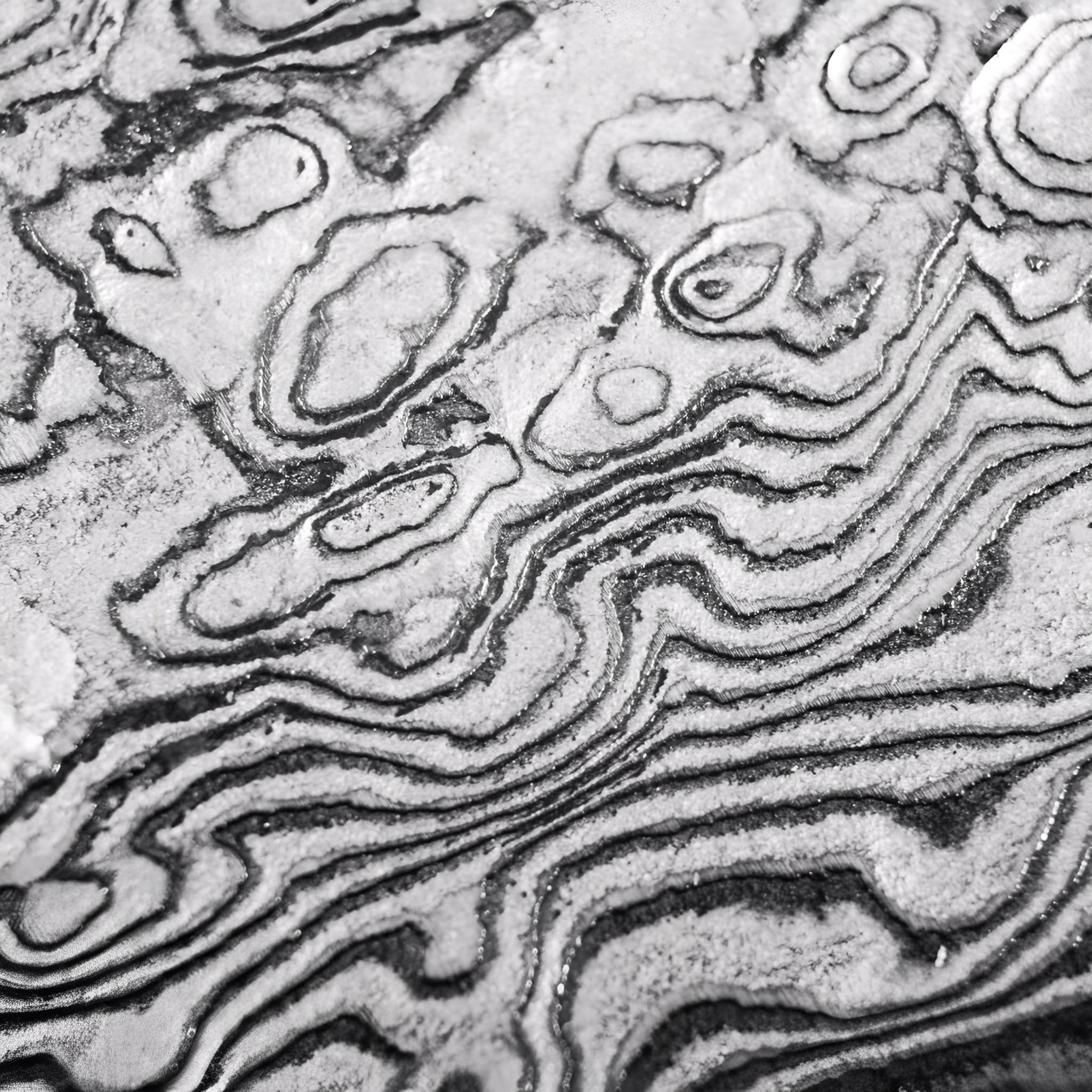
Materials Chosen Without Compromise
We select only the highest-grade steels and authentic fittings to ensure every katana is both a masterpiece and a reliable companion.
From the flawless hamon line to the perfectly balanced tang, each detail is carefully inspected to meet the highest standards of performance and aesthetics.
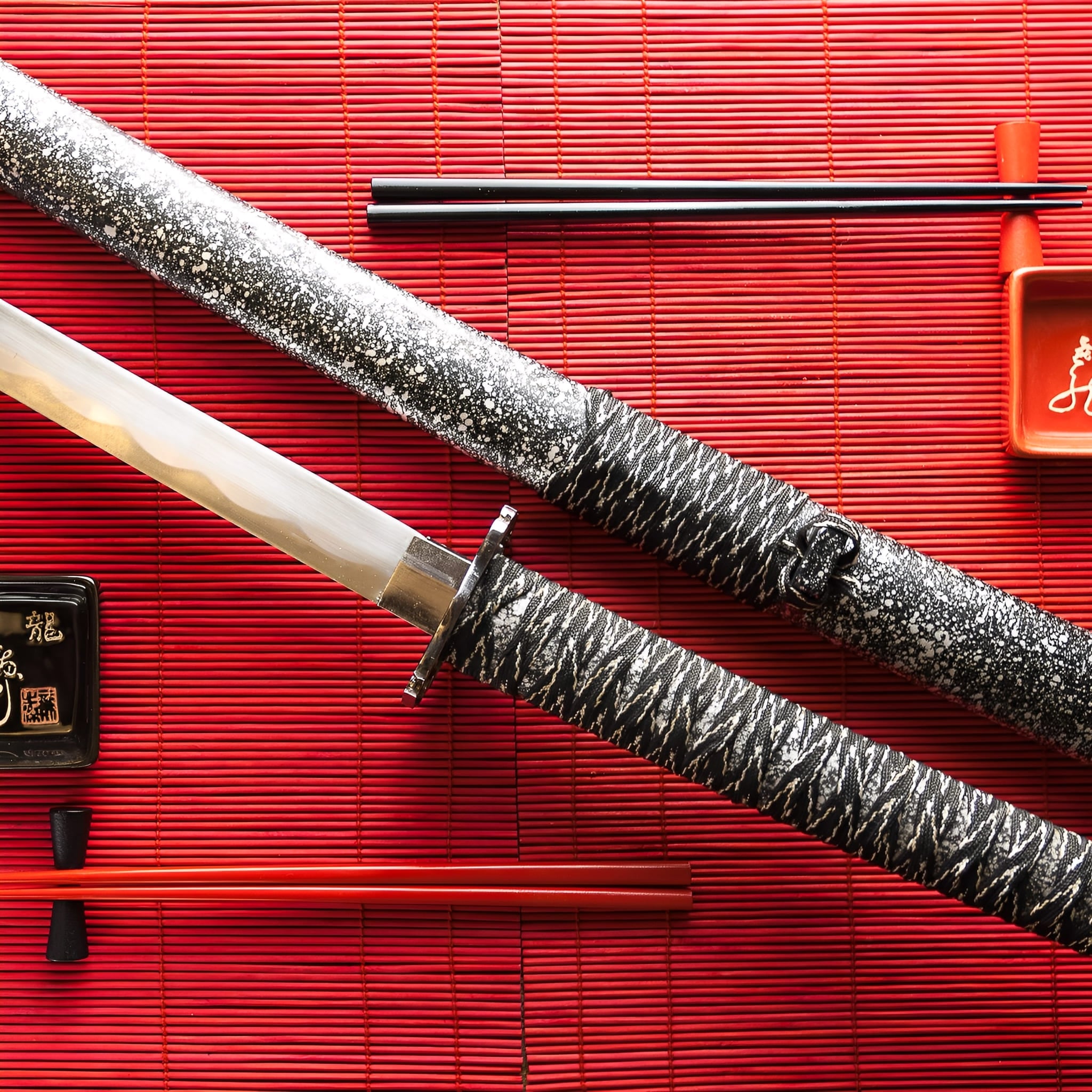
More Than a Sword, A Lifelong Legacy
Owning a handmade katana is an experience that goes beyond the blade itself. It’s holding history, tradition, and craftsmanship in your hands.
Whether displayed as a work of art or wielded with precision, your katana will stand as a symbol of timeless skill and dedication for generations to come.
-
Key Destinations
United States: 5–7 days
Canada: 5–7 days
Australia: 6–9 days
Denmark: 4–6 days
Netherlands: 3–5 days
Sweden: 4–6 days
Switzerland: 3–5 days
Finland: 5–7 days
Singapore: 6–8 days -
Central European Partners
France: 2–3 days
Germany: 3–5 days
Spain: 4–6 days
Italy: 4–6 days
Belgium: 3–5 days
Austria: 4–6 days
Ireland: 4–6 days
Poland: 4–6 days
Portugal: 4–6 days -
Extended EU Network
Czechia: 4–6 days
Hungary: 4–6 days
Slovakia: 4–6 days
Slovenia: 5–7 days
Romania: 5–7 days
Bulgaria: 5–7 days
Croatia: 5–7 days
Serbia: 5–7 days
Estonia: 5–7 days
Latvia: 5–7 days
Lithuania: 5–7 days
Luxembourg: 3–5 days
Greece: 5–8 days -
FAQ’s
Visit our FAQs page to find answers to common questions.